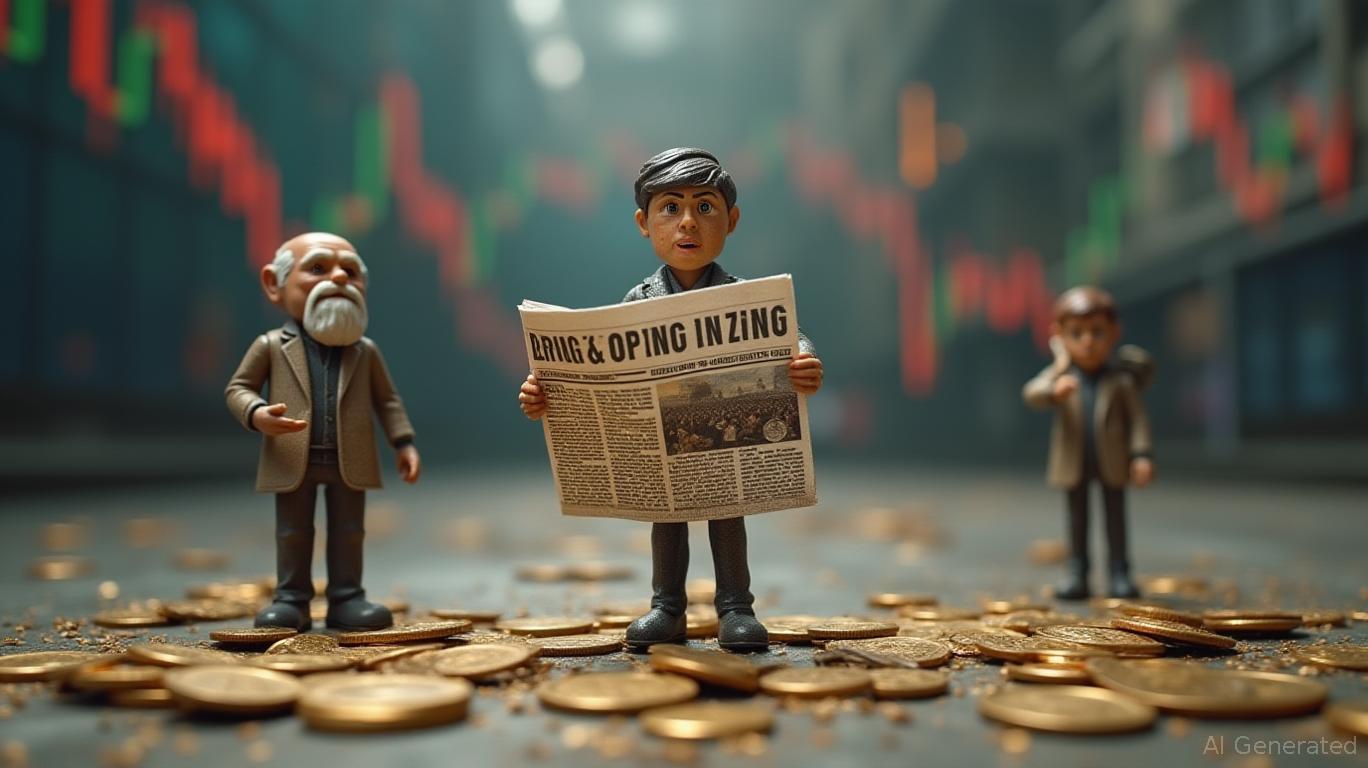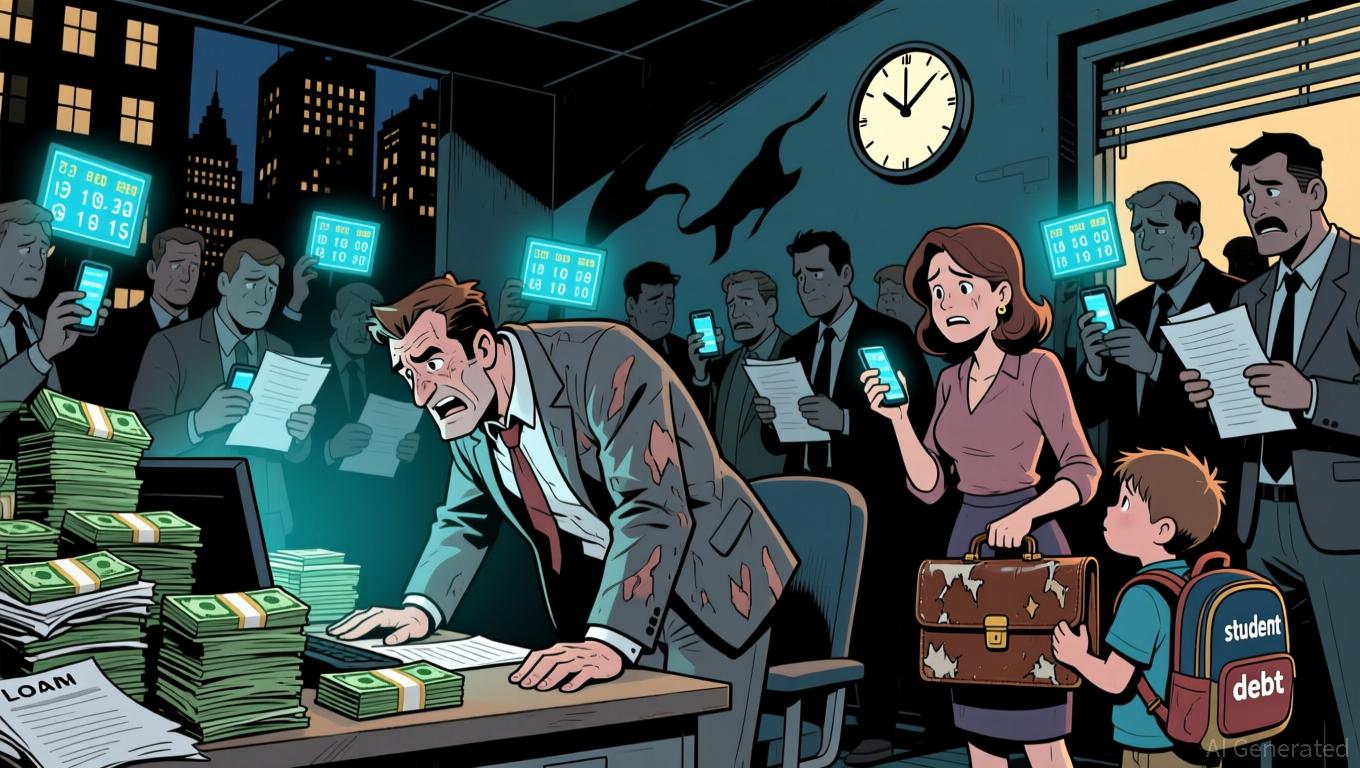Zinc's Decline: An Early Warning Sign for the Crypto Industry
- Digital asset treasuries face sharp sell-offs as investor confidence wanes, with the S&P GSCI Zinc Index dropping 1.56% on Nov 5, 2025. - The zinc index's volatility mirrors crypto market declines, signaling a shift to safer assets amid regulatory uncertainty and macroeconomic pressures. - SEC actions against crypto platforms have intensified market jitters, with analysts warning of cascading liquidations if declines persist. - Zinc's performance now serves as a key barometer for digital asset risk, refl
Digital asset reserves are experiencing a significant slump as investor trust diminishes, leading to a rapid sell-off in markets tied to the industry. The
The zinc index has attracted notable scrutiny due to its established link with speculative activity in digital asset markets. Over the last week, the index has swung between gains and losses, reaching a high of 247.94 points on November 3 before sliding to 243.72 points by November 5, based on MarketScreener figures. This instability reflects similar patterns in cryptocurrency markets, where leading tokens such as

Market specialists highlight the zinc index’s recent movement as a reflection of investor mood. “The swift drop in zinc prices signals eroding confidence in the digital asset sector,” commented a commodities strategist at a leading investment bank, pointing out that the 1.56% decrease on November 5 was the largest single-day loss for the S&P GSCI Zinc Index in over a month. This pattern is consistent with broader market shifts, as central banks tighten policy and economic challenges prompt investors to reconsider their positions in riskier assets.
The downturn in digital asset reserves has been further intensified by regulatory shifts. Recent enforcement actions by the U.S. Securities and Exchange Commission (SEC) against prominent crypto firms have increased uncertainty, causing institutional investors to reduce their stakes in associated markets—a trend mirrored by the zinc index’s recent weakness, according to MarketScreener. Although the zinc index is rooted in commodities, it is increasingly viewed as a gauge for the stability of digital asset-backed products. Analysts caution that continued declines may spark a wave of forced sales, deepening losses across both sectors.
Disclaimer: The content of this article solely reflects the author's opinion and does not represent the platform in any capacity. This article is not intended to serve as a reference for making investment decisions.
You may also like
Supreme Court Decision on Tariffs May Require $140 Billion in Refunds and Prompt Federal Reserve to Lower Rates
- UBS warns a Supreme Court ruling against Trump's tariffs could force $140B refunds, straining U.S. fiscal resources and prompting potential Fed rate cuts. - The refunds stem from 39% Swiss tariffs deemed potentially unlawful, with fiscal impact equivalent to 7.9% of 2025's projected budget deficit. - Legal challenges highlight executive overreach risks, while reduced tariffs could boost consumer spending and ease inflation, creating room for Fed easing. - Swiss business leaders have lobbied Trump to lowe

Ethereum Updates: TRON's GreatVoyage: Strengthening USDT's $122B Network to Compete with Ethereum

Arm's Low-Power Architectures Overcome AI Energy Constraints, Fuel 34% Growth in Revenue
- Arm Holdings reported $1.14B Q3 revenue, 34% YoY growth surpassing forecasts, driven by AI/data center demand. - Royalty revenue rose 21% to $620M while licensing revenue jumped 56% to $515M, reflecting strong IP adoption. - Strategic shift to develop full-chip solutions via Compute Sub Systems aims to compete with Nvidia/Amazon in AI hardware. - Parent company SoftBank explored Arm-Marvell merger to strengthen AI infrastructure, highlighting industry consolidation trends. - 20 "buy" ratings and $155 pri

Fed Faces a Choice: Boost Growth or Curb Mounting Debt?
- U.S. household debt hit $18.59 trillion in Q3 2025, driven by rising credit card, student loan, and home equity debt with delinquency rates at multi-year highs. - The Fed initiated rate cuts amid slowing job growth but faces a dilemma: easing economic strain risks inflating a consumer debt bubble while tightening worsens defaults. - Retailers, banks, and auto lenders face fallout as discretionary spending declines and loan defaults rise, while essential goods and debt collectors see increased demand. - P
